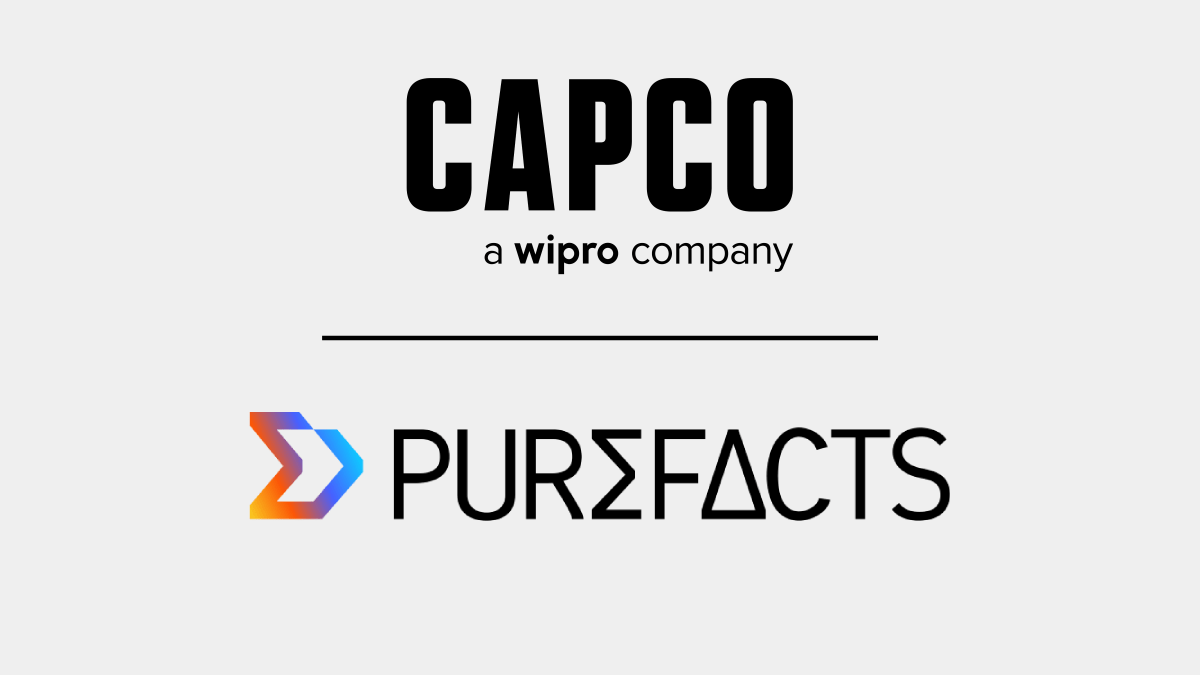Leaks are rarely a good thing, and hidden leaks are the worst kind. Homeowners know that a slowly leaking pipe or roof is about the last thing they want to discover. Car owners grow frustrated that a slow leak in a tire can be the hardest kind to fix. And you don’t have to be a boat owner to know, as Benjamin Franklin said, that “A small leak will sink a big ship.”
Your financial services business may be losing revenue and profits in the same way, through a wide range of seemingly small inefficiencies, poor procedures, misalignments, and human errors in your compensation system and compensation program. These leaks are often written off as an annoyance, rather than a problem that needs immediate fixing. But over time, the leaks turn into losses and reduce your bottom line.
“Watch the little things; a small leak will sink a big ship.” ~ Benjamin Franklin
How Big a Problem is Revenue and Profit Leakage?
Profit leakage – in this context – erupts from the unintended (or unnoticed) loss of revenue from your business and poorly optimized operations, resulting in a significant loss in overall profitability.
Statistics vary, but it’s generally estimated that every company, regardless of sector, experiences addressable leakage in a range of 1 to 5 percent of EBITDA (Source: EY).
In our experience, profit leakage is a considerable and often overlooked problem in the wealth management industry and has root causes that are behavioral, structural and operational in nature. Behavioral causes stem from actions that are induced, usually unintentionally, by the compensation, metrics and performance management program. Operational causes are often the result of business complexity and fragmented business processes. Finally, Structural causes relate to the design of the business model and/or the technology tools that support it and insufficient or unreliable data to fuel it.
Firms may experience one, two or all these root causes, contributing to significant recurring loss in revenues and profitability if not addressed.
We’ve identified the 25 ways in which your compensation system, procedures and program are likely allowing profit to leak out of your wealth management business.
25 Root Causes of Revenue and Profit Leakage
- Compensation Plans are not Supportive of Corporate Goals and Objectives.
When compensation and reward structures are not designed, implemented and communicated to support your firm’s business strategy and performance objectives, this results in suboptimal organizational performance and therefore impairment of top-line performance is a drag on profitability.
- Compensation Plans are Inconsistent or Not Aligned Across Business Units.
Business units that are meant to cooperate will be more successful when there is alignment of measurement and reward. Bringing multiple compensation regimes into alignment across multiple lines of business is difficult, but critical to avoiding counterproductive activities and organizational friction. Aligned measurement and compensation makes execution smoother and ensures focus is on value creating activities.
- Failing to Measure the Contribution of Compensation Plans.
Not measuring (or inadequately measuring) the contribution of the compensation plans and programs hides profit drains. Measuring compensation program performance is typically challenged by a lack of adequate and available data or the absence of organizational accountability for compensation performance ROI.
- Delays in Compensation Plan Design and Rollout
Compensation program changes are often needed to enhance alignment with corporate objectives, to address shifts in the market and to respond to changes in the business or team. Every day that passes between the decision to change the program and the implementation of the changes, represents leakage. It delays addressing sales and service focus issues, decreases rep/advisor satisfaction, persists operational burden and prevents all the oars pulling in one direction. Your compensation programs should be easily updated or replaced. Time-consuming requirements for custom programming or technical intervention is costly, and a warning sign that your compensation regime is not likely nimble enough to support your business. Don’t accept when the capabilities (or lack thereof) in your compensation system stand in the way of rewarding for the right customers, the right revenue, or the right performance standards.
- Overly Complex Compensation Plans
Allowing compensation plans to become too complex ultimately results in them becoming less effective. Focused and easily understood are the key design considerations for impactful compensation programs. Complexity creates friction with the participants and that impairs their execution – exactly what you don’t want. Complex plans make it difficult to ensure that everything is correct and paid out appropriately to the right participants. The errors that spring from complex plans are themselves so complex that they can frequently only be resolved by extended research and then implementing time-consuming and costly manual adjustments.
- An Unruly Herd of Compensation Programs
The sheer number of plans in use is not, in and of itself, a problem. However, how these plans relate and how they are managed can be a problem and can cause considerable errors and excess compensation. Plans should be easily created, named, managed, audited, understood and retired, as necessary. Poor process and oversight in plan selection, deployment and management can give rise to the wrong compensation plan or the wrong rules being deployed which results in compensation errors, reporting inaccuracies and contributes to significant leakage that can compound over time. A clean and organized user interface, logical workflow processes and efficient oversight processes mitigate many costly errors.
- Lack of Full Visibility and Transparency
Ideally a full and completely granular view into plan set-up, input data and the calculations, is available to business leaders, managers and advisors. A lack of this visibility complicates the process of finding and reconciling errors and resolving disputes. This wastes valuable advisor, front office and operations time and erodes trust which impairs revenue and adds costs.
- Data Type Classification Inconsistencies
Each discrete data type – especially product, service and asset/security types – must be associated to a classification that aligns with the compensation program. Frequently this means that several new products or securities may need to be assigned within the classification each day. While an automated process is desirable, many firms have workflows that include manual process that often are time consuming, have key-person risk or lack adequate validation controls. Inconsistencies in product assignments can potentially have a large impact on compensation over time and can be resource consuming to correct. For organizations with multiple lines of business, where products may be classified a number of times, and in a variety of different ways, these errors have a habit of multiplying.
- Poor Management of Floors and Limits
Where complicated joint, layered and split or sharing arrangements are required, it is not unusual for gross payout and/or minimum house rates to be inadvertently ignored when rules are set-up. This can result in over-allocations across multiple payees.
- Poor Management of Packaged Product Trailers and Marketing Fees
Packaged products tend to cause complications in incentive compensation programs. The revenue and end customer information can be difficult to integrate and improper controls and poor communication between systems and complex fee payment structures can result in mismanagement of trailer-based revenues. Common examples are the mishandling of trailer revenue where they are meant to be rebated back to the end client, or where certain asset types are to be treated differently in fee-billing. Incorrect fees payment can easily be processed, which can result in over-billing the client and potentially overpaying the advisor. These often go unnoticed for extended periods of time, and their impact (both financially and reputationally) can compound.
In the case of some alternate investments, the firm receives both a sales commission and marketing fee, and must control how these are managed. Without proper classification rules and attribution processes, the marketing fee (which is frequently not shared with the rep) can get incorrectly lumped into the gross production number used for payout, thereby increasing the payout to the rep and cost to the firm.
- Poor Control of Minimum Commissions or Fees.
Hard floors related to commissions and fees need to be properly implemented otherwise they become a soft floor. Claw backs for violation of hard floors should be automated or at a minimum the subject of transparent workflow involving reporting escalation.
- Lacking Proper Management of Discounts.
The compensation regime is typically used as one of the tools to manage discounting of products and services, or more accurately manage the profit impact of those discounts. Certainly, other price and discount controls are used, however in the dynamic relationship management environment in financial services – and especially wealth management – compensation is frequently the first and sometimes last, line of defense. Without adequate controls within the compensation system, rules may not be capable of properly stopping (or limiting) discounting behaviors resulting in potentially both loss of revenue as well as additional payroll expense.
- Lost Expenses – Not Loaded, Not Charged Back
The importance of monetizing the affiliation models is becoming a critical business function for most Wealth Management firms. Expenses can only be recovered via a compensation system when they are managed in the system. In general, regular recurring expenses tend to have a reasonably robust process related to their identification, set-up and reporting. As a result, they are generally captured properly and recovered via the compensation system. We do recommend at least an annual expense audit. Unfortunately, the one-time or infrequent charges, which can originate from a variety of sources, and in different formats, are easily overlooked. An email, voice message or even a scribble on a note pad are easily lost or misplaced resulting in lost recovery.
- Unidentified Overpayments
Unfortunately, the hard truth about payment errors is that firms are always told when a participant is underpaid, but rarely told when they are overpaid. An accurate, rules-based, compensation system with strong reporting capabilities will significantly minimize these overpayments. Old systems, weak data models and a reliance on spreadsheets is the recipe for Overpayments.
- Cancel/Rebill Mismanagement
Transactions that are cancelled and rebilled can contribute to leakage. Typically, this arises where the (re)processing doesn’t completely address ‘undoing’ all data that would have resulted from the existence of the erroneous transaction. The most common example is inadequate tracking of compensation or reward tier threshold impact. This can result in significant operation complexity or work to resolve, or it can lead to potentially material compensation errors (i.e., overpayment).
- Inability to Monitor Clearing, Custody & Platform (Schedule A) Fees
It is important to have the ability to accurately verify and attribute the fee charged to the firm by Clearing, Custody and Platform partners. Unfortunately, many firms are not able to easily identify incorrect fees, erroneous calculations, fees owed by advisors and/or where over-billing situations arise. For firms with multiple lines of business, the impact is magnified.
- Insufficient Mutual Fund Trailer Revenue Detail
Unfortunately, the data and reporting on mutual fund assets and revenues pales to that on many other financial products and services. Managing incomplete or inaccurate trail information just to support reconciliation to anticipated or expected revenues consumes valuable time. Additionally, a lack of clarity can result in incorrect allocations and calculations that can easily go unnoticed for months. At the root of this problem is asymmetrical information and the use of a variety of partial ‘fixes’ for that lack of symmetry. For example, fund holding and trailer information is commonly obtained from multiple sources – direct from the fund company, from industry data consolidation sources, in-house databases and frequently augmented through manual entry where there are delays in data availability.
- Adjustments Applied in the Incorrect Sequence
Without the ability to apply fees & adjustments (e.g., clearing fees, E&O charges or Program Fees) at the right point in the compensation process (typically gross vs. net), incorrect payouts and overpayment situations will occur.
- Under Recovery of “Out-of-Pocket” Expense owed to the Firm
Many expenses are collected and managed via offline processes either in the distribution network or finance department (e.g., Registration, FINRA & SIPC costs). These processes tend to be arms-length from the compensation system because many compensation systems lack the flexibility to support those types of expense. Many of these expenses should be borne, in whole or in part, by the advisors. As a result of the system disconnects, these expenses are at risk of being entered incorrectly or bypassed altogether.
- Poor Audit Tracking
Reviews of activity are required on a periodic basis. A compensation system that does not offer detailed audit tracking (and reporting) of changes makes it very difficult and time consuming to find, identify, and manage changes made in error. Additionally, poor audit reporting typically means that other functions – such as compliance and finance – must rely on compensation operations for inefficient investigations.
- Staffing to Peak Load
A system with automation gaps, poor tools for permanent resolution of errors or that relies significantly on the manual upload of files each day can expose compensation operations to highly variable peak loads. Maximizing data source integrations, rules based decision-making and processes to enable ‘one-and-done’ permanent problem resolution mitigate peak load variance and enable a consistent and optimized staffing model. This reduces volume-based errors, unintentional omissions caused by uncertainty as to who is responsible and therefore optimizes operations staffing costs.
- Insufficient Proration
Mid-period events, such as when a new rep is onboarded, challenge systems to support the proration of the related revenues and expenses. It can also impact how average and trailing production levels are determined. The resultant need for manual calculations and adjustments adds workload burden and introduces errors.
- Disconnect Between Fee Billing and Compensation Systems.
Billing and compensation systems should function symbiotically as they rely on information in each system to enable the other. When billing and compensation systems don’t “talk” properly, manual changes applied in one system are not routinely reflected in the other. For example, a compensation solution that cannot adequately track the metrics required by the billing team (such as waivers, thresholds, volumes, etc.), results in incorrect billing and compensation distributions. Further, when the revenue cycle is linked together the Revenue Lifecycle can be more fully managed end-to-end.
- Mismanagement of Termination Payee Agreements
Complicated termination procedures can easily result in overpayment of incentive compensation. For example, when there is a lag between when an action is taken (such as terminating a rep in the compensation system) and when that action should have been taken, this can lead to payout that incorrectly includes extra days of active time. Depending upon the effort required to correct it, these issues can sometimes go unnoticed (and not corrected) creating an overpayment to the rep and a loss to the firm.
- Errors in Managing Date-Based Rules
By failing to properly control effective dates (i.e., not expiring rules on time), potential overpayments may persist for long durations and not be recognized. A common example is the failure to expire a ‘new recruit’ plan that pays higher than the ‘experienced advisor’ plan. The system should, at a minimum, offer reporting to highlight these conditions.
Evaluate Your Business for Leakage
As these 25 points demonstrate, the ways that revenue and profit can leak out of your business is not merely metaphorical – it’s real.
Dated technology and poor business processes supporting your incentive compensation and performance management can hurt your bottom line. A modern, adaptable, technology platform and compensation solution that is flexible, and can be automated and integrated with necessary data sources and external systems, will ensure accuracy and give your firm’s management the opportunity to properly analyze the effectiveness of their salesforce and their compensation programs. Attending to these points of leakage will improve the structural, operational and behavioral alignment of your compensation program and operations with your business and increase your business performance.
Contemporary compensation management technology, coupled with strong operational processes and a commitment to a robust data model, helps to prevent profit leakage. A system that fully integrates all steps in the compensation and revenue management process is the best tool for helping to grow revenues and boosting your firm’s profitability.
Assess your business for compensation program related leakage using our handy self-assessment tool – contact us for a copy.




